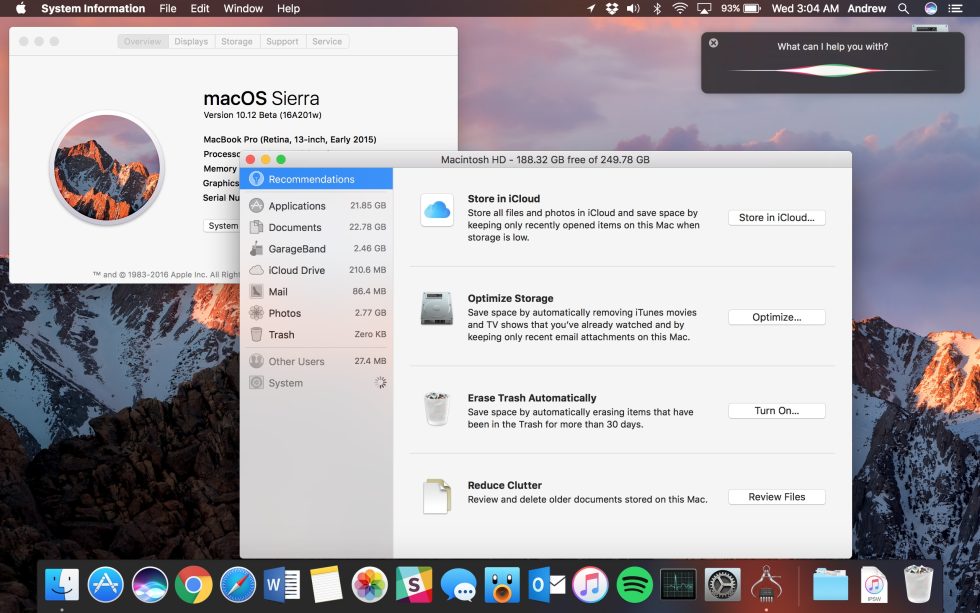
When Apple runs through its operating system announcements at WWDC, the OS X part of the show is pretty much the only instance when the company spends any time talking about a product name.
The Mac has long since ceased to be Apple's most important product, but the company has kept up the tradition of slapping a secondary name on each OS release, something separate from the version number and the "OS X" or "Mac OS X" branding. Often, those names are used to set expectations about the release. Snow Leopard is a refinement of Leopard. Mountain Lion is a refinement of Lion. El Capitan is a refinement of Yosemite.
It's tempting to read the "macOS" rebranding as some grand statement about the Mac, but, truth be told, "Sierra" is more indicative of what we're getting. The name comes from a mountain range that encompasses Yosemite and El Capitan rather than moving away from them. It's another year of building on Yosemite's foundation, another year of incremental change, and another year of over-saturated mountain wallpapers.
Like El Capitan before it, Sierra focuses on a few marquee features, a couple of under-the-hood changes, a smattering of smaller tweaks, and one or two signposts pointing toward future development. It's the next release of OS X, new name or not. And we've spent a week with the first developer beta to dig into some of the new features ahead of the public beta in July and the public release in the fall.
The full review will dive deeper into most of the topics covered here, and will also feature more extensive comments on general stability and performance—this is an early developer beta, and things are going to be broken. Many of the things we talk about today could also be added, tweaked, or removed between now and the "golden master" build in the fall. With all of that in mind, let's dive in.
Table of Contents
- System requirements and compatibility
- Appearance and branding
- Siri
- Continuity additions and Apple Watch unlocking
- iCloud Desktop and Documents
- Optimized Storage and other space-saving tricks
- App changes
- Messages
- Safari 10, Apple Pay, and Picture-in-Picture
- Notes
- Contacts
- Photos
- Security: Gatekeeper
- Randomized paths for non-Mac App Store apps
- Grab bag
- No new OpenGL extensions
- Disk Utility tweaks (and how to test APFS)
- More granular autocorrect
- Smaller installer and disk footprint
- Keeping tabs on everything
- New name, same Mac
reader comments
145